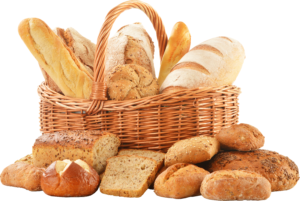In an era where health consciousness meets culinary adventure, the quest for healthier alternatives to our staple foods has become more prevalent than ever before. Bread, a universal diet staple enjoyed across cultures, is no exception.
With the rising demand for low-calorie options among health-conscious foodies, the exploration into how we can enjoy this beloved staple, sans the guilt, is at its zenith.
This comprehensive post will unravel the secrets behind how to make low-calorie bread at home, ensuring you don’t have to compromise on taste or texture for health.

Read More: What is an Active Calorie: Your Guide to Enhanced Fitness and Weight Management
1. The Science of Cutting Calories in Bread
The challenge in creating a low-calorie bread lies in reducing the caloric content without sacrificing the fluffiness and texture that we all love. This involves substituting traditional ingredients with lower-calorie alternatives that still provide the structural integrity and taste of regular bread.
Innovations in food science have introduced a variety of alternative flours, sweeteners, and fats that can be used to achieve this delicate balance.
a. Ingredients for Low-Calorie Bread Success
- Alternative Flours: Best flour for low-calorie bread includes almond flour, coconut flour, and oat flour, which offer fewer calories and carbohydrates in comparison to traditional white flour.
- Sweeteners: Natural sweeteners like stevia, erythritol, and monk fruit extract can effectively reduce the calorie count while retaining the desired sweetness.
- Fats: Opting for light variants of traditional fats or incorporating pureed fruits and vegetables like applesauce and pumpkin can drastically cut down fat content without drying out the bread.
b. Step-by-Step Guide to Baking Low-Calorie Bread
- Choose the Right Ingredients: Start with selecting high-quality, low-calorie alternatives for your flour, sweetener, and fats. This forms the foundation of your nutritious bread.
- Mixing Dry and Wet Ingredients Separately: For even distribution, mix your dry ingredients in one bowl and wet in another before combining them. This prevents overmixing, which can affect the bread’s texture.
- Gentle Folding: When combining wet and dry ingredients, use a folding method to incorporate air and maintain a light texture.
- Proofing: Allow the dough to proof until it doubles in size. This is crucial for developing flavor and texture.
- Baking: Bake in a preheated oven according to the recipe instructions, keeping an eye on it towards the end to prevent over-baking.
c. Health Benefits Beyond Calories
Low-calorie bread not only aids in weight management but also contributes to improved nutrition by incorporating ingredients rich in vitamins, minerals, and dietary fiber. This enhances your overall diet, promoting better digestive health and long-term well-being.
Read More: Is Salad Dressing Homogeneous or Heterogeneous?
2. Why you should make this low calorie bread recipe your go-to?
Opting for this low-calorie bread recipe as your go-to is a smart choice for anyone looking to maintain a healthy lifestyle without sacrificing the pleasure of eating bread. Incorporating this recipe into your diet means you can enjoy the warmth, comfort, and versatility of bread, all while keeping your calorie intake in check.
This approach supports weight management efforts and can align with various dietary goals, from reducing sugar intake to managing carbohydrate levels. Furthermore, by choosing to bake your own low-calorie bread, you’re also ensuring that you’re consuming wholesome ingredients without unnecessary additives or preservatives found in many store-bought options.
Thus, making this recipe a staple in your kitchen is not just about the calories—it’s about prioritizing your health and well-being without compromising on taste or quality.
3. What is a low calorie bread substitute?
A low-calorie bread substitute is any type of alternative bread that is made with fewer calories and/or healthier ingredients compared to traditional bread. This can include options such as almond flour bread, coconut flour bread, and oat flour bread, as well as gluten-free or low-carb options.
These substitutes are often used by individuals looking to reduce their calorie intake without sacrificing taste or texture.
Read More: Can You Eat Chicken Salad While Pregnant? Understanding the Risks and Benefits
4. Conclusion
Baking low-calorie bread at home is a rewarding venture that not only caters to your health goals but also unlocks a new realm of culinary creativity. By understanding the science, choosing the right ingredients, and following our step-by-step guide, you’re well on your way to making nutritious bread that’s as gratifying to bake as it is to eat.
Join the scores of health-conscious foodies who’ve found a happy medium in low-calorie bread – because healthy baking leads to a nutritious, and delicious, way of life.
